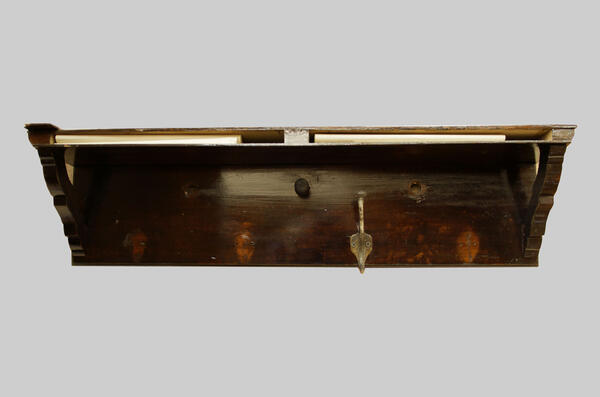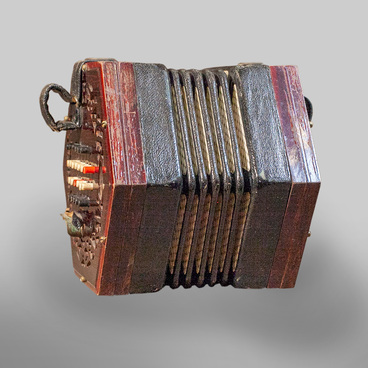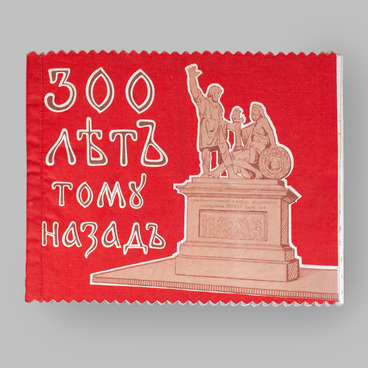Sometimes, inconspicuous household items from the museum’s exhibition can actually tell a lot about the most dramatic events in the history of a town or even a country. For example, this coat rack produced by local craftsmen was an important part of the Vyatka revolutionary movement.
The first underground printing establishment of the Vyatka Committee of the Russian Social Democratic Labor Party was organized in August 1904. There were four printing presses in the outhouse, with the types obtained by employees of local private printing houses. It was not really an underground printing house: it worked openly and even received private orders and printed advertisements. It was not difficult for the police to find the printing house, and in August 1906, it was destroyed.
It was not easy, but the Vyatka Committee of the Russian Social Democratic Labor Party managed to set up another printing house. It was strictly confidential, but the police once again managed to track it down. The printing house had to be closed. The revolutionary movement in Vyatka stopped. The police kept a wary eye on any suspicious activity and paid particular attention to the so-called unreliable citizens.
Young like-minded people could not tolerate the existing laws of the authorities, and the revolutionaries got their struggle for human rights to a whole new level. Students of technical colleges, realschulen, the theological seminary, the Mariinsky gymnasium for girls, and the Vyatka gymnasium for boys took an active part in the revolutionary events.
One of the activists of the revolutionary movement in Vyatka was Vera Vasilyevna Zubareva (known under the party pseudonym “Student Girl”). In 1914, she graduated from the Vyatka Mariinsky Gymnasium for Girls and entered the medical institute in Petrograd. She participated in the work of student revolutionary circles and conducted a revolutionary propaganda campaign among the Petrograd workers. When she came to Vyatka for holidays, she distributed Bolshevik literature.
In 1917, Vera Zubareva contributed actively to the work of the Vyatka Committee of the Russian Social Democratic Labor Party of Bolsheviks. Local Bolsheviks often gathered at her place. For the purposes of conspiracy, prohibited items were transported with the use of special objects with hiding places, including hiding boxes, travel suitcases with a false bottom, as well as ordinary coat racks with inconspicuous compartments for illegal literature.
The first underground printing establishment of the Vyatka Committee of the Russian Social Democratic Labor Party was organized in August 1904. There were four printing presses in the outhouse, with the types obtained by employees of local private printing houses. It was not really an underground printing house: it worked openly and even received private orders and printed advertisements. It was not difficult for the police to find the printing house, and in August 1906, it was destroyed.
It was not easy, but the Vyatka Committee of the Russian Social Democratic Labor Party managed to set up another printing house. It was strictly confidential, but the police once again managed to track it down. The printing house had to be closed. The revolutionary movement in Vyatka stopped. The police kept a wary eye on any suspicious activity and paid particular attention to the so-called unreliable citizens.
Young like-minded people could not tolerate the existing laws of the authorities, and the revolutionaries got their struggle for human rights to a whole new level. Students of technical colleges, realschulen, the theological seminary, the Mariinsky gymnasium for girls, and the Vyatka gymnasium for boys took an active part in the revolutionary events.
One of the activists of the revolutionary movement in Vyatka was Vera Vasilyevna Zubareva (known under the party pseudonym “Student Girl”). In 1914, she graduated from the Vyatka Mariinsky Gymnasium for Girls and entered the medical institute in Petrograd. She participated in the work of student revolutionary circles and conducted a revolutionary propaganda campaign among the Petrograd workers. When she came to Vyatka for holidays, she distributed Bolshevik literature.
In 1917, Vera Zubareva contributed actively to the work of the Vyatka Committee of the Russian Social Democratic Labor Party of Bolsheviks. Local Bolsheviks often gathered at her place. For the purposes of conspiracy, prohibited items were transported with the use of special objects with hiding places, including hiding boxes, travel suitcases with a false bottom, as well as ordinary coat racks with inconspicuous compartments for illegal literature.




